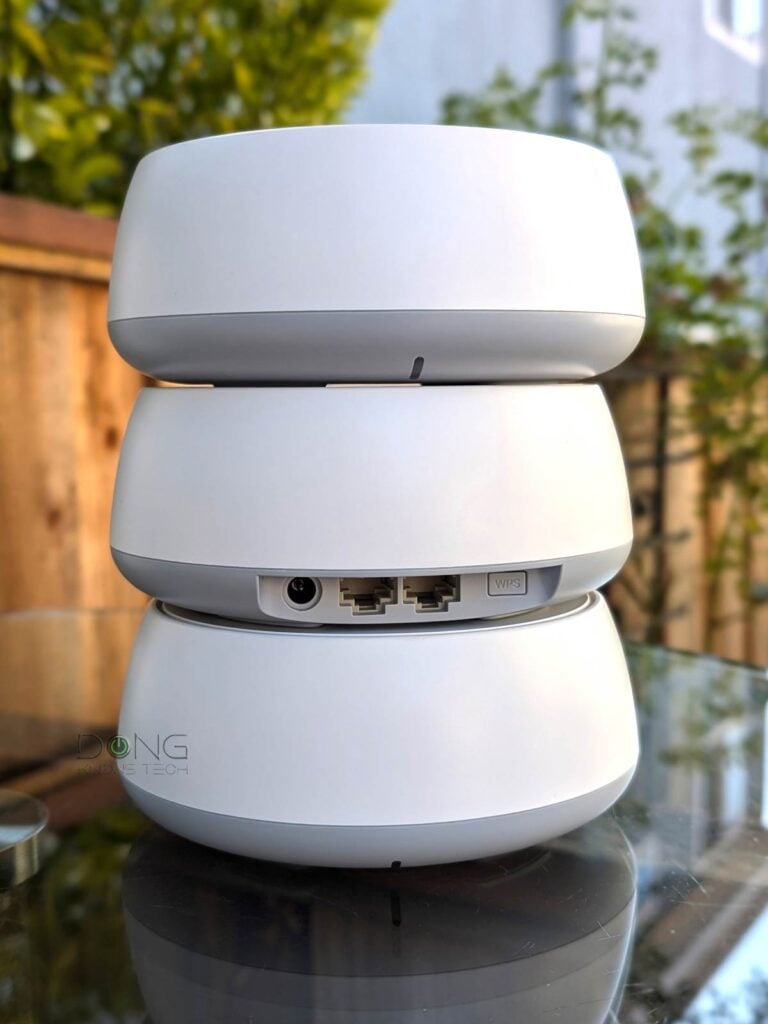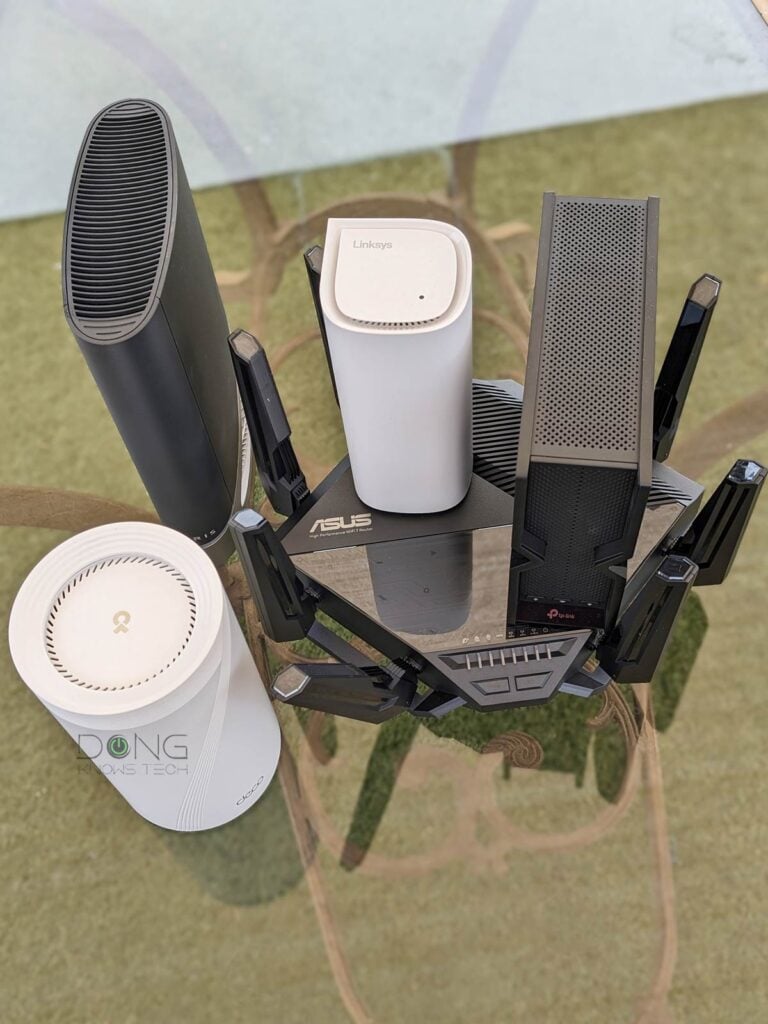This post includes the top five best Wi-Fi 7 mesh systems you can confidently bring home today.
All Wi-Fi 7 solutions will work well with existing clients, as long as they are not too old. That said, if you have an aging mesh Wi-Fi system that’s been struggling, I recommend giving one of these Wi-Fi 7 sets a go today.
Dong’s note: I first published this frequently-revised post on February 24, 2024, and last updated it on July 22, 2025.


Top five best Wi-Fi 7 mesh systems of 2025: The battle-tested list
You need at least one supported client and a broadcaster to enjoy the new Wi-Fi standard.
For the former, most mobile devices (laptops, phones, and tablets) in the past few years have come with Wi-Fi 7. And then there are hardware upgrade options to add to existing computers.
On the broadcasting side, this list of the top five best Wi-Fi 7 mesh systems applies to those living in a large home. Only need a single router? Pick the router unit of any system below, or check out this list of the top five best Wi-Fi 7 routers instead.
This best-five list is sorted in recommendation order, with the most recommended at the top—the numbers indicate their ranking. When applicable, I’ll also mention the alternatives, which are those that almost made it to or were previously on this list.
I’ve used all the devices mentioned here for an extended period, and I’m still using some of them today. They are real battle-tested options.
1. Ubiquiti UniFi


Ubiquiti’s UniFi is not a particular set of purpose-built Wi-Fi 7 systems. Instead, you can combine the hardware to create a mesh network or a robust wired network. If you have a wired home, this is undoubtedly the best way to establish a robust home or office network. For this reason, UniFi is also one of the best DIY Wi-Fi systems.
Pros
Excellent and reliable performance with seamless support for UniFi hardware of multiple categories (Network, Protect, Talk, Access, etc.)
Tons of helpful networking features, a comprehensive web user interface, and a mobile app
Practical and aesthetically pleasing hardware design, no vendor account required
Cons
No AP mode as a system, most Wi-Fi-integrated consoles can only work in the primary router role
Some helpful features (teleport VPN, automatic backup, convenient remote access, etc.) require a vendor-connected login account
2. Asus ZenWiFi BT10


The ZenWiFi BT10 is purposely the lesser version of the BQ16 Pro below, but in many cases, especially if you have wired backhauling, it’s a much better alternative. Since late 2024, this Wi-Fi system has proven to be an excellent, if not the best, option.
Asus’s similar alternatives:
Pros
Tri-band Wi-Fi 7 with two 10Gbps ports and excellent performance
ASUSWRT 5.0 has lots of customizations and free-for-life high-end features (VPN, Parental Controls, Online Protection, Dual-WAN, Link Aggregation, Smart Home Master, etc.).
Robust web user interface and helpful optional mobile app; easy-to-blend-in design
Comparatively compact with no internal fan; runs cool and quiet
Cons
No AFC (at launch); not wall-mount-ready
3. TP-Link Deco BE85


The TP-Link Deco BE85 is the very first Wi-Fi 7 mesh system on the market. It features a multitude of Multi-Gig ports, as well as support for SFP+. While on paper, the tri-band Deco BE85 seems inferior to the quad-band Deco BE95, in real-life usage, it proves to be a more sensible solution.
TP-Link’s alternatives:
Pros
Four Multi-Gig ports, including two 10 Gbps, one of which supports RJ45/SFP+ combo; multi-Gigabit wired backhauling out of the box
Wi-Fi 7 support, backward compatible with existing clients; excellent overall real-world performance
Cons
The performance of the 2.4 GHz band and 10Gbps ports could be better
Vendor-connected mobile app required; HomeShield Pro costs extra
Internal fan; runs a bit hot
4. Netgear Orbi 870 series


The Orbi 870 series is Netgear’s third Wi-Fi 7 Orbi set, and it’s quite a charm. It’s the second Orbi set that does away with the permanent dedicated-backhaul-band approach, like the case of the Orbi 770 series, while having top-tier Wi-Fi 7 specs on the 5GHz and 6GHz bands.
It’s still far from perfect, though, due to the fact it has only one 10Gbps port on the router unit.
Netgear’s alternatives:
Pros
Straightforward tri-band without a permanently dedicated backhaul with good performance
10Gbps WAN and all 2.5Gbps LAN ports to guarantee entry-level multi-Gigabit experience in wired or wireless backhauling
Aesthetically pleasant design; no internal fan
Cons
No 10Gbps LAN or USB ports; no AFC; no user-accessible customization for the 6GHz band; limited SSID options
No or web-based remote management, thin on free networking features; new default IP address for the web user interface
Online protection requires subscriptions; stagnant and poor Orbi app
5. TP-Link Deco BE25


The Deco BE25 is the only dual-band Wi-Fi 7 system on this list. This system is an ideal option for those not caring about the 6GHz band or live in regions where this band is not (fully) available. It has an excellent combo of features, ease of use, performance, and cost.
Dual-band alternative:
Compare the street prices
Pros
Reliable Wi-Fi performance; dual 2.5Gbps ports with excellent wired backhauling
Super affordable for Wi-Fi 7 hardware; standard set of free networking and features
Compact, eye-catching, fanless design; easy to use
Cons
Short range, minimum Wi-Fi 7 specs with matching performance
Security+ and advanced Parental Controls require subscriptions.
TP-Link login account and mobile app required; no web-based management
The final thoughts
There you go! If you’re looking to upgrade your system to Wi-Fi 7, any of the options above, and their alternatives, will get the job done. Pick one based on your budget, home layout, and bandwidth needs.
Generally, with some luck and, especially, good wiring, a Wi-Fi 7 mesh system will give you the maximum coverage you need and the real-world multi-Gigabit experience you’ve always wanted.
If you need more help, this post on how to choose a Wi-Fi system will come in handy.
